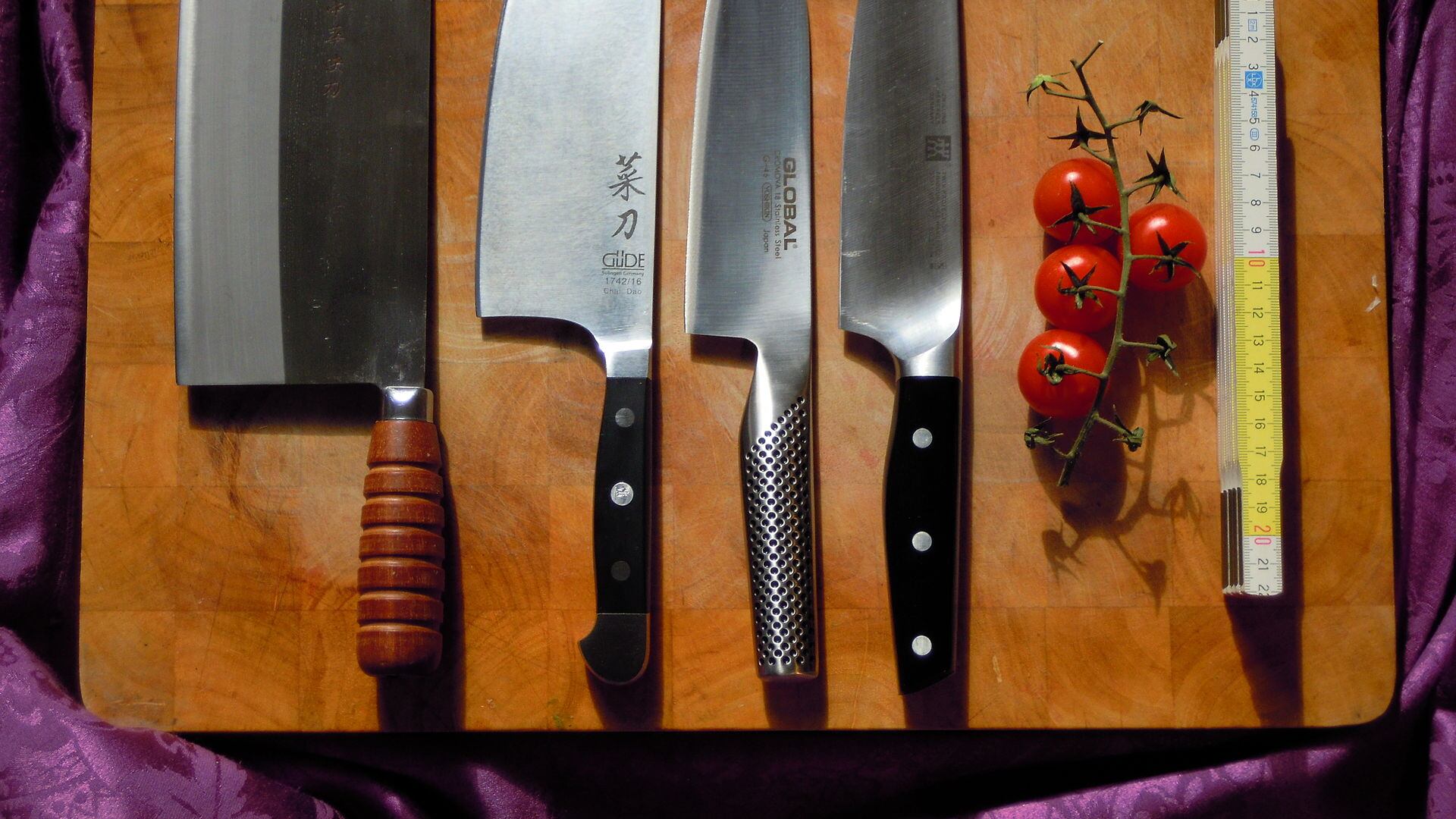I've been a fairly serious home cook for a couple of years now, but I like to keep things fairly simple. I don't have a lot of patience, let alone space for specialty items like garlic presses or pizza stones. I use home ice cream machines as a mental shorthand for ludicrous vanity gadgets that get used once and never again.
Yet, it does help to spend some money wisely when it comes to home cooking. There are a couple of items that you can invest in which make preparing a meal a much easier, more pleasurable (as in not having to delicately maneuver every vegetable so as not to slice your hand open with a dull dollar store knife) experience.
I was originally going to write about three separate things that I think it's worth splurging on to improve the home cooking experience. But the more I thought about it, the more I realized that having a good chef's knife is important enough for home cooking that it deserves a post of it's own.
A Real Chef's Knife For Everyone
I really can't emphasize this enough, but a proper 8″ chef's knife is far and away the best investment you can make as a home cook—perhaps, crucial to being a halfway decent at all. A good chef's knife, one with enough weight to make chopping vegetables or crushing garlic effortless and a sharp enough edge to last months or years without requiring a professional resharpening, completely transforms how you cook.

A chef's knife is the the most important thing you can invest in for a simple reason: You're going to use it more than you use any other single thing in your kitchen. Just about every task in home cooking that isn't making pancakes involves "cutting stuff up" as at least one of its steps. You want something that is going to make that happen quickly and efficiently, as it's going to happen every single day!
I'm neither professional cook nor knife manufacturer, so I'm not going to spend a lot of time talking about the difference between carbon and stainless steel. But here is one fairly important difference you should be aware of, and that is the distinction between German and Japanese styles of knives.
Here's a quick breakdown, as most widely available kitchen knives are of one of these varieties. German knives are heavier (8-10 ounces), with a gentle curve through the middle of the blade that lets you chop in a "rocking" motion without the blade leaving the board. They're usually made out of softer steel than Japanese knives, and tend to require resharpening more frequently. Japanese (gyuto) knives are lighter (5-7 ounces) and have a straighter blade, making them suited to a push-pull chopping motion. They're usually made of carbon steel, which makes them sharper, but they require more care (you have to clean them after every use or they rust), but less sharpening.
If you are not the type of person who cares about precise, paper-thin cuts for fancy presentation, it doesn't really matter which style you use as long as you feel comfortable using it, and most dedicated kitchen retailers like Kitchen Kaboodle will walk you through a bunch of knives if you ask. If you do want to get fancy, you want a Japanese knife.
Personally, I'm of the Teutonic persuasion, and I've used Wüsthof chef's knives for home cooking since I was 21. I haven't looked back since.

Family-owned for over 200 years, Wüsthof is as close to the gold standard as it gets with German knives. Of the three I own (people keep gifting them to me for some reason), I recommend the 8″ classic chef's knife. With little frills, it's sturdy enough to chop through tough vegetables like pumpkin, it's solid enough to crush garlic, and I've never had a single problem with the handle. Seven years in with thousands of uses, and it's as good as it was the day I got it.
As for Japanese knives, the Amazon-approved Mac MTH-80 from Mac Knife is extremely popular. With a straighter blade and especially razor-sharp edge, it's considered among the best chef's knives money can buy. I haven't used it personally, but much-more-professional product review websites than this one said it's far and away their favorite.
As for cheaper knives? If you're really on a budget, Wüsthof has a model with a plastic handle at $24.95 that will probably do just fine. I have a cheaper Wüsthof that came as part of a cutlery set (folks, the trick to having fancy kitchen things is to get married) that I use frequently, but it's a little less hefty and has dulled significantly quicker than the classic. My guess is that this fella will be in the same boat, but it's certainly going to be better than one of those heinous serrated knifes that look like they're about to shatter into your hand at any given moment.
Unless you're one of those magical people who are able to eat out every night of the week, I can't recommend getting a decent knife enough. Sooner or later, you are going to want to step your home cooking game up past bagged stir fry from Trader Joes.
(Cool Stuff is a new feature at Willamette Week where we feature product reviews, roundups, sales and other commerce and shopping-oriented content. All Cool Stuff reviews are editorially independent, meaning we provide honest reviews and aren't paid by the brands we write about. If you do choose to purchase something after following one of our links, Willamette Week may receive a commission, which helps fund our journalism.)

